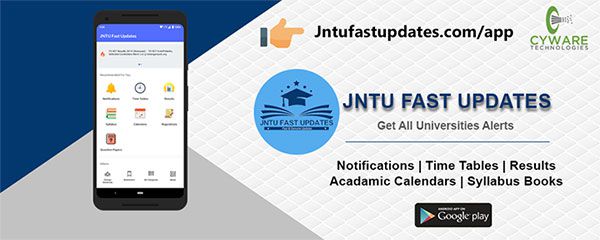JNTUK R19 3-1 Mechanical Measurements & Metrology Material PDF Download
Students those who are studying JNTUK R19 Mechanical Branch, Can Download Unit wise R19 3-1 Mechanical Measurements & Metrology (MM&M) Material/Notes PDFs below.

JNTUK R19 3-1 Mechanical Measurements & Metrology Material PDF Download
OBJECTIVES:
- Inspection of engineering parts with various precision instruments
- Design of part, tolerances and fits
- Principles of measuring instruments and gauges and their uses
- Evaluation and inspection of surface roughness
- Inspection of spur gear and thread elements
- The methods of measurement of displacement, speed, acceleration, vibration, stress and strain, force, torque and power.
UNIT-1
Basic principles of measurement – measurement systems, generalized configuration and functional descriptions of measuring instruments – examples. dynamic performance characteristics – sources of error, classification and elimination of error.
MEASUREMENT OF DISPLACEMENT: Theory and construction of various transducers to measure displacement – piezo electric, inductive, capacitance, resistance, ionization and photo electric transducers, calibration procedures.
MEASUREMENT OF SPEED: Mechanical tachometers – electrical tachometers – stroboscope, noncontact type of tachometer
Download UNIT-1 Material PDF | Reference-2
UNIT-2
STRESS STRAIN MEASUREMENTS: Various types of stress and strain measurements – electrical strain gauge – gauge factor – method of usage of resistance strain gauge for bending compressive and tensile strains – usage for measuring torque, strain gauge rosettes.
MEASUREMENT OF FORCE, TORQUE AND POWER– Elastic force meters, load cells, torsion meters, dynamometers.
MEASUREMENT OF ACCELERATION AND VIBRATION: Different simple instruments – principles of seismic instruments – Vibrometer and accelerometer using this principle.
Download UNIT-2 Material PDF | Reference-2
UNIT-3
SYSTEMS OF LIMITS AND FITS: Introduction, nominal size, tolerance, limits, deviations, fits -Unilateral and bilateral tolerance system, hole and shaft basis systems- interchangeability, deterministic & statistical tolerances, selective assembly. International standard system of tolerances, selection of limits and tolerances for correct functioning.
LIMIT GAUGES: Taylor’s principle – design of go and no go gauges; plug, ring, snap, gap, taper, profile and position gauges.
Download UNIT-3 Material PDF | Reference-2
UNIT-4
LINEAR MEASUREMENT: Length standards, end standards, slip gauges- calibration of the slip gauges, dial indicators, micrometers.
MEASUREMENT OF ANGLES AND TAPERS: Different methods – bevel protractor, angle slip gauges- angle dekkor- spirit levels- sine bar- sine table, rollers and spheres used to measure angles and tapers.
OPTICAL MEASURING INSTRUMENTS: Tools maker’s microscope and uses – autocollimators, optical projector, optical flats and their uses.
Interferrometry – Interference of light, Michelson’s interferometer, NPL flatness interferometer, and NPL gauge interferometer.
COMPARATORS: Types – mechanical, optical , electrical and electronic, pneumatic comparators and their uses.
Download UNIT-4 Material PDF | Reference-2
UNIT-5
SURFACE ROUGHNESS MEASUREMENT: Differences between surface roughness and surface waviness –Numerical assessment of surface finish-CLA, Rt., R.M.S. Rz, R10 values, Method of measurement of surface finish – Profilograph, Talysurf, ISI symbols for indication of surface finish.
GEAR MEASUREMENT: Nomenclature of gear tooth, tooth thickness measurement with gear tooth vernier & flange micro meter, pitch measurement, total composite error and tooth to tooth composite errors, rolling gear tester, involute profile checking.
SCREW THREAD MEASUREMENT: Elements of measurement – errors in screw threads- concept of virtual effective diameter, measurement of effective diameter, angle of thread and thread pitch, and profile thread gauges.
FLATNESS MEASUREMENT: Measurement of flatness of surfaces- instruments used- straight edges- surface plates – auto collimator
Download UNIT-5 Material PDF | Reference-2
TEXT BOOKS:
- Engineering Metrology / R.K.Jain / Khanna Publishers
- Measurement Systems: Applications & design / D.S Kumar/
REFERENCE BOOKS:
- Measurement systems: Application and design/Doeblin Earnest. O. Adaptation/ TMH
- Experimental Methods for Engineers / J.P.Holman/McGraw Hill
- Mechanical and Industrial Measurements / R.K. Jain/ Khanna Publishers.
- Instrumentation, measurement & analysis / B.C.Nakra & K.K.Choudhary/TMH
- Engineering Metrology / Mahajan / Dhanpat Rai Publishers
- Engineering Metrology / I.C.Gupta / Dhanpat Rai Publishers
- Precision Engineering in Manufacturing / R.L.Murthy / New Age
- Engineering Metrology and Measurements / NV Raghavendra, L Krishna murthy/ Oxford publishers.
- Engineering Metrology / KL Narayana/Scitech publishers
OUTCOMES:
- CO1: Describe the construction and working principles of measuring instruments for measurement of displacement and speed and select appropriate instrument for a given application.
- CO2: Describe the construction and working principles of measuring instruments for strain, force, Torque, power, acceleration and Vibration and select appropriate instrument for a given application.
- CO3: Explain shaft basis system and hole basis systems for fits and represent tolerances for a given fit as per the shaft basis system and hole basis system and design limit gauges based on the tolerances for quality check in mass production.
- CO4: Explain methods for linear, angle and flatness measurements and select a suitable method and its relevant instrument for a given application.
- CO5: To measure the threads, gear tooth profiles, surface roughness and flatness using appropriate instruments and analyze the data.

320-x100(1).gif)

download pdf where have been saved